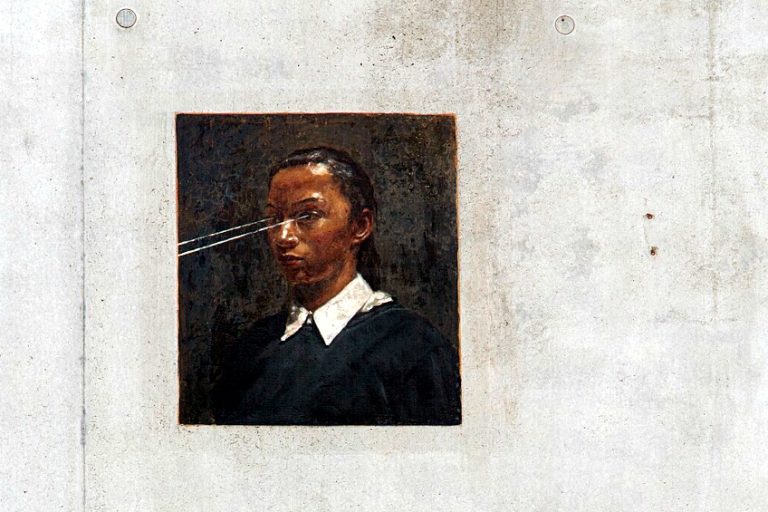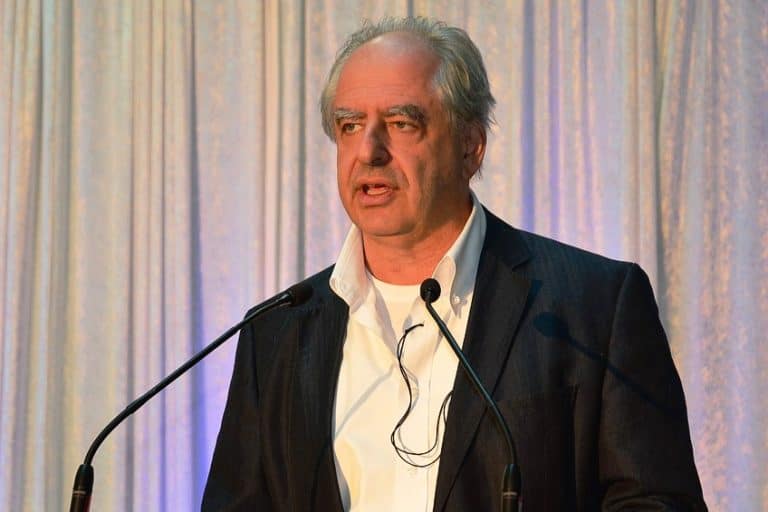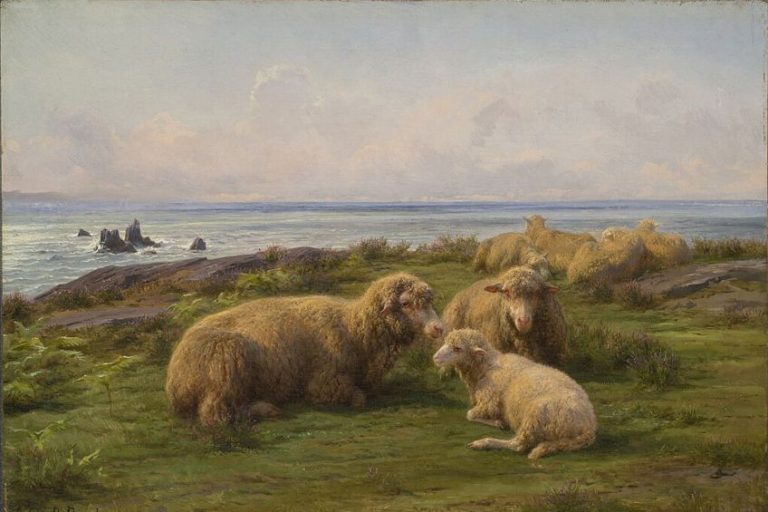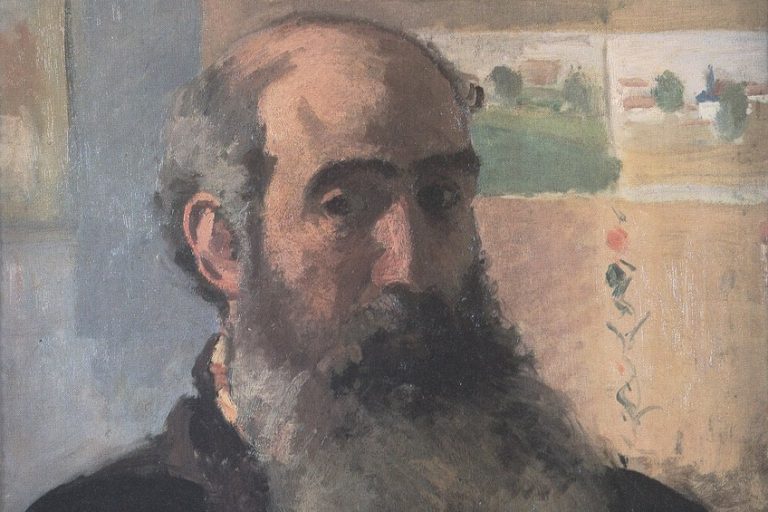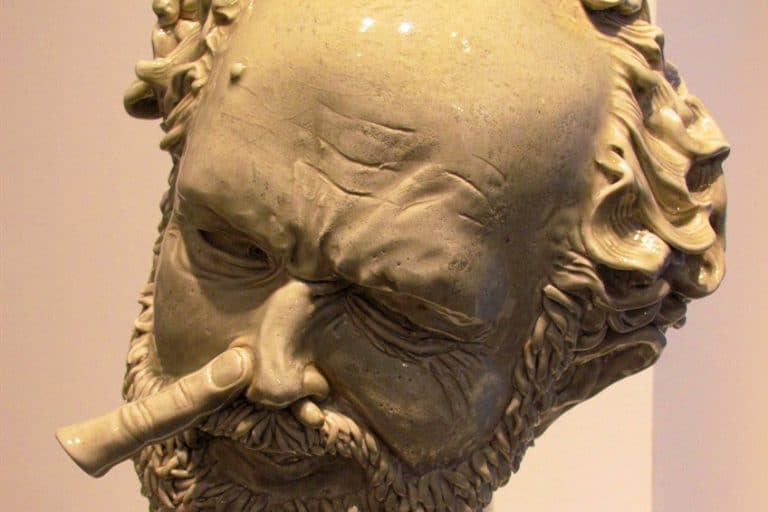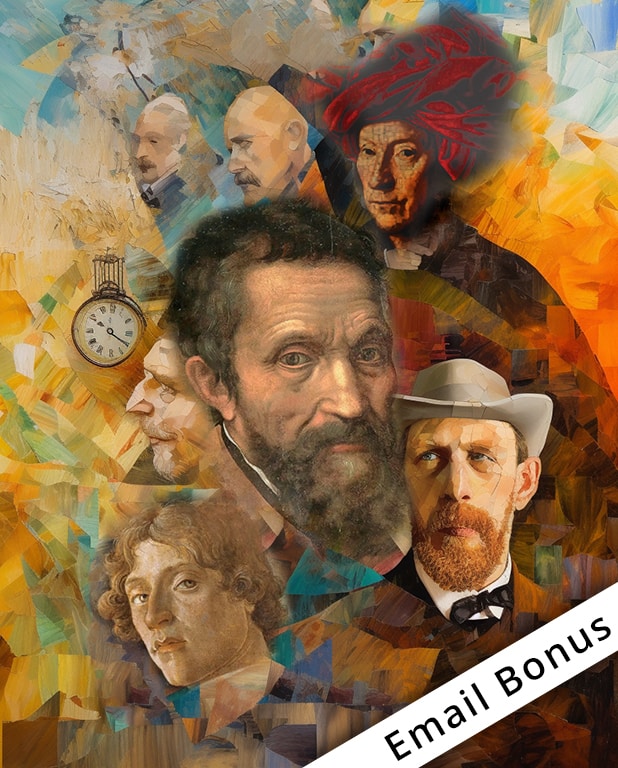Utagawa Hiroshige – A Journey in Print
Utagawa Hiroshige, one of Japan’s most celebrated ukiyo-e artists, is renowned for his evocative and poetic landscape prints that captured the natural beauty of Edo-period Japan. Born in 1797 in Edo (now Tokyo), Hiroshige initially trained to become a fire warden before turning to art, where he found his true calling. His innovative approach to composition and use of color revolutionized the genre, particularly through his series The Fifty-Three Stations of the Tōkaidō, which depicted the famous travel route between Edo and Kyoto. Hiroshige’s works are characterized by their serene atmospheres, intricate details, and harmonious balance between human activity and the natural world, leaving a lasting legacy that continues to influence artists globally.
Key Takeaways
- Utagawa Hiroshige’s art captures the essence of Edo-period Japan.
- His major works include Fifty-three Stations of the Tōkaidō and One Hundred Famous Views of Edo.
- Hiroshige’s influence extends to Western art movements, particularly the Impressionists.
Life and Artistic Training
| Birth | 1797 |
|---|---|
| Death | October 12, 1858 |
| Place of Birth | Edo (now Tokyo), Japan |
| Genre of Work | Ukiyo-e and landscape prints |
Utagawa Hiroshige, born in 1797 in Edo, now known as Tokyo, is often celebrated as the last great master of the ukiyo-e woodblock printing tradition. Best known for his vivid landscapes and everyday scenes, Hiroshige’s art captures the ephemeral beauty of nature and the vibrancy of urban life in Japan during the Edo period. His works not only provide a window into 19th-century Japanese culture but also greatly influenced Western art movements, particularly the Impressionists and Post-Impressionists. Hiroshige’s journey as an artist began with his training under the Utagawa school, where he developed his unique style that harmonized delicate detail with bold compositions.

His series, Fifty-three Stations of the Tōkaidō and One Hundred Famous Views of Edo, remain timeless masterpieces, demonstrating his genius in portraying the shifting seasons and bustling life of Japan. His prints often reflect the influence of Chinese scroll painting and nods to the renowned artist Katsushika Hokusai, yet they maintain a distinct identity marked by Hiroshige’s personal touch. Hiroshige’s legacy endures not only through his extensive catalog of over 8,000 prints but also in his profound impact on global art. His evocative landscapes, which turned everyday scenes into poetic works of art, continue to inspire artists and captivate audiences worldwide.
By exploring Hiroshige’s work, one can gain a deeper appreciation for the intricate beauty of Japanese art and its far-reaching influence.
Early Life and Background
Hiroshige was born in 1797 in Edo, modern-day Tokyo. His father, Ando Gen’emon, held a position in the fire brigade and belonged to the samurai class. In 1809, both of Hiroshige’s parents passed away, leaving him an orphan at the age of twelve. Despite these early hardships, Hiroshige inherited his father’s job, offering him some stability. His initial artistic training began under a minor Kano-school artist named Okajima Rinsai.
Apprenticeship and Influence of Toyohiro
Around 1810, Hiroshige sought to study under Utagawa Toyokuni but was unsuccessful. Instead, he became an apprentice of Utagawa Toyohiro, another prominent ukiyo-e artist. Toyohiro, a master of Kabuki actor portraits, had a significant impact on Hiroshige’s style.
Under Toyohiro, Hiroshige learned the techniques and aesthetics of ukiyo-e, incorporating his master’s name into his own as a mark of respect and lineage.
Establishing a Name in Ukiyo-e
By the 1830s, Hiroshige began to establish his reputation in the ukiyo-e community. His series, The Fifty-three Stations of the Tōkaidō, published in 1833, was a breakthrough, depicting various landscapes and travel scenes along the Tōkaidō road. Hiroshige’s work stood out for its lyrical portrayal of landscapes and everyday life, appealing to a broad audience. With over 8,000 prints, his detailed work marked him as a master in the field.

Mature Period
During his mature period, Hiroshige continued to produce numerous landscapes and genre scenes. His series, One Hundred Famous Views of Edo, created in the 1850s, showcased vibrant scenes of the city and its surroundings. Hiroshige’s mature works were characterized by their use of color, perspective, and elaborate compositions.
These pieces continued to refine the ukiyo-e tradition, depicting a mix of natural beauty and urban life in Edo-period Japan.
Later Period and Death
In his later years, Hiroshige’s output remained prolific. Despite changing tastes and the advent of photography, his works continued to be in high demand. Hiroshige passed away in 1858, leaving behind a significant legacy. His prints captured the transient beauty of the Edo period, and his influence extended into Western art, inspiring artists like Vincent van Gogh and Claude Monet.

Hiroshige’s Major Works
Utagawa Hiroshige created several significant series of woodblock prints that made a lasting impact on Japanese art. These works, mainly landscape prints, highlight everyday life, nature, and famous locations in Japan.
The Fifty-Three Stations of the Tōkaidō
The Fifty-Three Stations of the Tōkaidō is one of Hiroshige’s most famous series. Created in the early 1830s, it features 55 prints, including the start and end points, depicting travel from Edo (modern Tokyo) to Kyoto. Hiroshige captured various weather conditions like snow, rain, and mist, making each station unique. He emphasized the journey’s challenges and beauty, enhancing the viewer’s experience. These prints exemplify the artist’s ability to convey mood and atmosphere, becoming a hallmark of Japanese woodblock printing.

One Hundred Famous Views of Edo
One Hundred Famous Views of Edo is another renowned series by Hiroshige. Completed between 1856 and 1858, it illustrates the beauty of Edo, now Tokyo, through 119 prints. Hiroshige depicted various seasons, times of day, and weather conditions, showcasing the city’s dynamic nature. The series includes famous landmarks, streets, and everyday scenes, highlighting the bustling life of Edo.
These prints are celebrated for their innovative compositions and vibrant colors.
Fugaku Sanjūrokkei (Thirty-Six Views of Mount Fuji)
Although not as extensive as the previous two series, Hiroshige’s Fugaku Sanjūrokkei still stands out. Created in the 1850s, it is inspired by his contemporary, Katsushika Hokusai’s similar series. Hiroshige’s versions of Mount Fuji emphasize different perspectives and conditions, such as snow-covered peaks and misty landscapes. His portrayal of the iconic mountain adds a lyrical quality to the natural beauty, further cementing his reputation as a master landscape artist. In these major works, Hiroshige’s exceptional skills in woodblock printing, use of color, and composition are evident. Each series offers a unique glimpse into Japan’s landscapes and everyday life during the Edo period.

Artistic Style and Techniques
Utagawa Hiroshige’s art is renowned for its vibrant use of color and unique methods. His work significantly influenced Western artists and shaped the direction of the Impressionist and Post-Impressionist movements.
Use of Color and Bokashi Technique
Hiroshige’s prints are known for their bold and bright colors. He masterfully combined ink and color on paper, creating vivid and atmospheric scenes. One of his favorite techniques was bokashi, where colors graduate smoothly from light to dark. This method added depth and dimension to his landscapes. He often depicted natural elements like skies, rivers, and mountains using subtle gradients. This attention to detail made his work stand out among other Ukiyo-e artists.
His series, Fifty-three Stations of the Tōkaidō, showcases his expertise in using color to convey time and mood changes.
Influence of Western Art
Hiroshige’s work reached far beyond Japan. His landscapes and techniques caught the eye of Western artists involved in Japonism, such as Vincent van Gogh and James McNeill Whistler. They admired his perspective, composition, and use of color.

Van Gogh even reinterpreted some of Hiroshige’s prints with his unique style. Hiroshige’s influence is visible in the Impressionist movement, where artists began to focus on capturing the fleeting moments of light and nature. His ability to portray everyday scenes with such artistry left a lasting impact on these Western artists.
Legacy and Influence
Utagawa Hiroshige’s unique style left a significant mark on various art movements. His techniques and themes particularly resonated with European artists and continue to be celebrated worldwide. Here’s an overview of his lasting impact on art and culture.
Impact on Impressionists and Post-Impressionists
Hiroshige had a notable influence on European Impressionists and Post-Impressionists. Artists like Vincent van Gogh and Claude Monet were inspired by his use of color, perspective, and composition. Van Gogh even recreated some of Hiroshige’s prints, admiring their bold lines and vibrant hues.
Monet’s famed water lily series shows a clear homage to Hiroshige’s depictions of nature.
The concept of Japonism, the craze for Japanese art in Europe, was partly fueled by Hiroshige’s works. James McNeill Whistler also drew from Hiroshige’s nocturnal scenes, which influenced his atmospheric Nocturne paintings. Overall, Hiroshige’s art played a crucial role in shaping modern European art.
Hiroshige’s Disciples
Hiroshige’s style was carried on by his disciples, ensuring his techniques and themes lived on. Notable among them were Hiroshige II and Hiroshige III. These artists maintained the essence of Hiroshige’s approach but brought their own subtle changes. They continued to produce exquisite landscapes and scenes from daily life. Their works kept the tradition of ukiyo-e alive, even as Japan modernized and Western influences grew. These disciples ensured that Hiroshige’s legacy endured within Japan, influencing future generations of Japanese artists.

Permanent Collections Worldwide
Hiroshige’s works are held in high esteem and prominently featured in major museums around the world. The Metropolitan Museum of Art in New York houses several of his pieces, highlighting the global appreciation for his artistry. The Van Gogh Museum in Amsterdam also showcases how his work influenced Van Gogh’s painting style. In Japan, institutions dedicated to ukiyo-e, like the Adachi Museum of Art, celebrate Hiroshige’s contributions.
His series, like One Hundred Famous Views of Edo, are often displayed in these collections, showcasing his mastery to an international audience.
Legacy of Utagawa Hiroshige Today
Today, Hiroshige’s legacy is evident in various forms. His prints are studied for their innovative use of perspective and color. Modern artists often draw inspiration from his work, specifically in design and illustration fields. The continued interest in ukiyo-e among collectors and scholars keeps Hiroshige relevant in contemporary discussions about art. His influence extends to popular culture, with his images appearing in everything from fashion to digital media. This lasting impact highlights Hiroshige’s role as a visionary artist whose work transcends time and geography.

Utagawa Hiroshige’s enduring legacy as a master of ukiyo-e lies in his ability to transcend the ordinary and elevate the everyday scenes of Edo-period Japan into timeless works of art. His meticulous attention to detail, innovative use of perspective, and sensitivity to the changing seasons have cemented his place in art history. Hiroshige’s influence extends far beyond his native Japan, inspiring Impressionist and Post-Impressionist artists in the West and shaping the global appreciation of Japanese art. As we reflect on his body of work, Hiroshige’s prints continue to captivate and inspire, reminding us of the beauty and tranquility found in nature and daily life.
Frequently Asked Questions
How Can One Determine the Authenticity of a Hiroshige Print?
To determine authenticity, look at the paper quality, printing technique, and colors used. Genuine Hiroshige prints often have distinct line work and vibrant colors. Authentication may also require an expert to verify the artist’s signature and publisher seals.
What Are the Key Factors That Determine the Value of Hiroshige Prints?
The value of Hiroshige prints depends on their condition, rarity, and historical significance. Prints from well-known series like The Fifty-Three Stations of the Tokaido are highly valued. Early editions in good condition fetch higher prices. Provenance and the presence of original markings also affect value.
What Are Hiroshige’s Most Celebrated Contributions to the Art World?
Hiroshige is celebrated for his innovative landscape prints and for popularizing the genre of ukiyo-e. His series, such as The Fifty-Three Stations of the Tokaido and One Hundred Famous Views of Edo, are iconic. He brought a lyrical quality to landscapes, capturing the beauty of nature and daily life in Japan.
How Did Utagawa Hiroshige’s Style Evolve Throughout His Career?
Hiroshige’s early works focused on actor portraits and bijinga (pictures of beautiful women). Later, he shifted to landscapes, where he found great success. Over time, his use of color and perspective became more refined. His later works show a greater emphasis on mood and atmosphere, reflecting the changing seasons and weather conditions.
Isabella studied at the University of Cape Town in South Africa and graduated with a Bachelor of Arts majoring in English Literature & Language and Psychology. Throughout her undergraduate years, she took Art History as an additional subject and absolutely loved it. Building on from her art history knowledge that began in high school, art has always been a particular area of fascination for her. From learning about artworks previously unknown to her, or sharpening her existing understanding of specific works, the ability to continue learning within this interesting sphere excites her greatly.
Her focal points of interest in art history encompass profiling specific artists and art movements, as it is these areas where she is able to really dig deep into the rich narrative of the art world. Additionally, she particularly enjoys exploring the different artistic styles of the 20th century, as well as the important impact that female artists have had on the development of art history.
Learn more about Isabella Meyer and the Art in Context Team.
Cite this Article
Isabella, Meyer, “Utagawa Hiroshige – A Journey in Print.” Art in Context. July 8, 2024. URL: https://artincontext.org/utagawa-hiroshige/
Meyer, I. (2024, 8 July). Utagawa Hiroshige – A Journey in Print. Art in Context. https://artincontext.org/utagawa-hiroshige/
Meyer, Isabella. “Utagawa Hiroshige – A Journey in Print.” Art in Context, July 8, 2024. https://artincontext.org/utagawa-hiroshige/.




